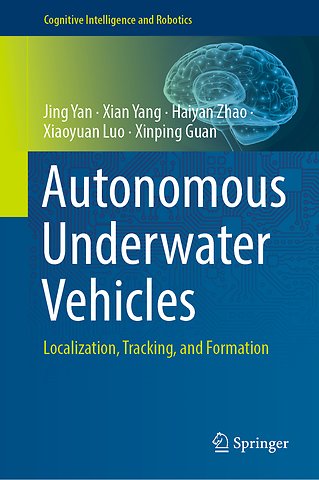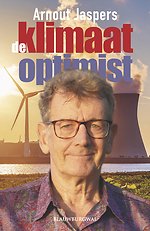Autonomous Underwater Vehicles
Localization, Tracking, and Formation
Samenvatting
Autonomous underwater vehicles (AUVs) are emerging as a promising solution to help us explore and understand the ocean. The global market for AUVs is predicted to grow from 638 million dollars in 2020 to 1,638 million dollars by 2025 – a compound annual growth rate of 20.8 percent.
To make AUVs suitable for a wider range of application-specific missions, it is necessary to deploy multiple AUVs to cooperatively perform the localization, tracking and formation tasks. However, weak underwater acoustic communication and the model uncertainty of AUVs make achieving this challenging.
This book presents cutting-edge results regarding localization, tracking and formation for AUVs, highlighting the latest research on commonly encountered AUV systems. It also showcases several joint localization and tracking solutions for AUVs. Lastly, it discusses future research directions and provides guidance on the design of future localization, tracking and formation schemes for AUVs.
Representing a substantial contribution to nonlinear system theory, robotic control theory, and underwater acoustic communication system, this book will appeal to university researchers, scientists, engineers, and graduate students in control theory and control engineering who wish to learn about the core principles, methods, algorithms, and applications of AUVs. Moreover, the practical localization, tracking and formation schemes presented provide guidance on exploring the ocean. The book is intended for those with an understanding of nonlinear system theory, robotic control theory, and underwater acoustic communication systems.
Specificaties
Inhoudsopgave
1.1 Dynamical Model of Autonomous Underwater Vehicles
1.2 Weak Communication Characteristic of Underwater Acoustic Communication
1.3 Existing Literatures on the Localization, Tracking and Formation
2. Persistent Localization of Autonomous Underwater Vehicles without Velocity Measurements
2.1 Introduction
2.2 System Model and Problem Formulation
2.3 Main Results
2.3.1 Persistent Localization Design
2.3.1.1 Observer-Based Motion Prediction Strategy Design
2.3.1.2 Graph-Based Persistent Localization Strategy Design
2.3.2 Performance Analysis
2.3.2.1 Stability Analysis
2.3.2.2 Convergence Analysis
2.3.2.3 Computational Overhead
2.3.2.4 Communication Overhead
2.4 Numerical Simulation
2.4.1 Simulation of Observer-based Motion Prediction
2.4.2 Simulation of Persistent Localization
2.5 Summary
References
3. Joint Localization and Tracking of Autonomous Underwater Vehicle with State Disturbances
3.1 Introduction
3.2 System Model and Problem Formulation
3.3 Main Results
3.3.1 Joint Localization and Tracking Design
3.3.1.1 Self-Localization Method Design
3.3.1.2 Model-Free Tracking Controller Design
3.3.2 Performance Analysis
3.3.2.1 Convergence Analysis of Localization Method
3.3.2.2 Cramer-Rao Lower Bound of Localization Method
3.3.2.3 Boundness Analysis of Time-Delay Estimation Error
3.3.2.4 Convergence Analysis of Tracking Controller
3.4 Numerical Simulations and Experiments
3.4.1 Simulation of Self-Localization Method
3.4.2 Simulation of Tracking Controller
3.4.3 Experimental Results
3.5 Summary
Reference
4. Joint Localization and Tracking of Autonomous Underwater Vehicle with Model Uncertainty
4.1 Introduction
4.2 System Model and Problem Formulation
4.3 Main Results
4.3.1 Joint Localization and Tracking Design
4.3.1.1 Self-Localization Algorithm Design
4.3.1.2 Reinforcement Learning Based Tracking Controller Design
4.3.2 Convergence Analysis of Tracking Controller
4.4 Numerical Simulation
4.4.1 Simulation of Self-Localization Method
4.4.2 Simulation of Tracking Controller
4.5 Summary
Reference
5. Tracking Control of Autonomous Underwater Vehicle with time Delay and Actuator Saturation
5.1 Introduction
5.2 System Model and Problem Formulation
5.3 Main Results
5.3.1 Tracking Controller Design
5.3.2 Stability Condition and DOA Estimation
5.4 Numerical Simulations and Experiments
5.4.1 Simulation Results
5.4.2 Experimental Results
5.5 Summary
Reference
6. Finite-Time Tracking Control of Autonomous Underwater Vehicle without Velocity Measurements
6.1 Introduction
6.2 System Model and Problem Formulation
6.3 Main Results
6.3.1 Finite-Time Tracking Controller Design
6.3.2 Performance Analysis
6.3.2.1 Stability Condition of Velocity Observer
6.3.2.1 Stability Analysis of Tracking Controller
6.4 Numerical Simulations and Experiments
6.4.1 Simulation Results
6.4.1.1 Simulation results of Velocity Observer
6.4.1.2 Simulation results of Tracking Controller
6.4.2 Experimental Results
6.5 Summary
Reference
7. Formation Control of Autonomous Underwater Vehicles with Communication Delay
7.1 Introduction
7.2 System Model and Problem Formulation
7.3 Main Results
7.3.1 Tracking Control for Single-AUV System
7.3.2 Formation Control for Multi-AUV System
7.3.3 Performance Analysis
7.4 Numerical Simulations and Experiments
7.4.1 Simulation Results
7.4.2 Experimental Results
7.5 Summary
Reference









